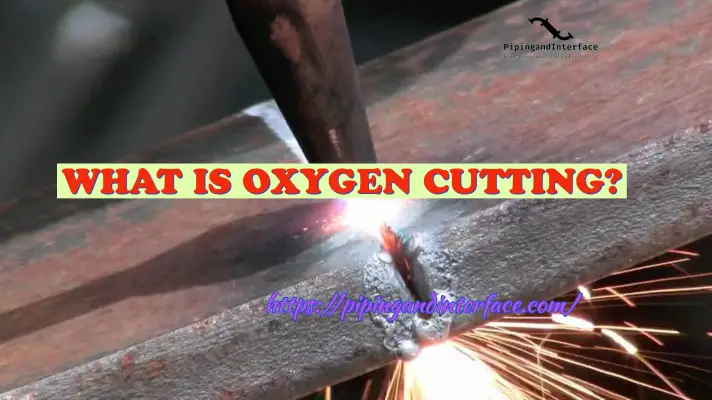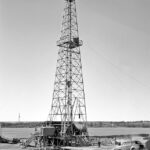The ignition point of a fuel/chemical is a fundamental concept in the realm of combustion science and engineering. It is the temperature at which a fuel vapor-air mixture becomes hot enough to sustain a self-sustaining chemical reaction, leading to combustion. The ignition point is a critical parameter that influences the efficiency, safety, and environmental impact of various combustion processes. In this blog post, we will delve deep into the concept of the ignition point, its significance, the factors affecting it, and its applications across different industries.
What is Ignition Point?
The ignition point, often referred to as the autoignition point or ignition temperature, is the minimum temperature at which a fuel vapor or gas mixture will spontaneously ignite without the need for an external ignition source, such as a spark or flame. This phenomenon occurs due to the activation energy required to initiate the chemical reaction between the fuel and oxygen in the air. Once the ignition point is reached, the exothermic reaction sustains itself, releasing heat, light, and various combustion byproducts. ASTM E659 provides the standard test methods for determining the Ignition temperature of chemicals.
Significance of Ignition Point
Understanding the ignition point is crucial for several reasons:
- Safety: In industrial processes involving fuels, knowledge of the ignition point is vital to prevent unintended ignition or explosions. Designing systems to operate above the ignition point of the fuel used helps ensure safe operation.
- Combustion Efficiency: Achieving optimal combustion efficiency requires careful control of the ignition process. Operating engines or burners at temperatures above the ignition point ensures complete and efficient fuel combustion, minimizing harmful emissions.
- Pollution Control: By designing combustion processes around the ignition point, industries can reduce the formation of pollutants, such as nitrogen oxides (NOx) and unburned hydrocarbons.
- Energy Production: Ignition points play a role in designing efficient and reliable combustion-based energy production systems, such as internal combustion engines and gas turbines.
Factors Affecting Ignition Point
Several factors influence the ignition point of a fuel:
- Fuel Composition: Different fuels have varying ignition points due to differences in molecular structures and chemical properties.
- Pressure: Changes in pressure can affect the ignition point. Higher pressures generally lead to higher ignition points.
- Air-Fuel Ratio: The proportion of fuel to air in a mixture impacts the ignition point. Fuel-rich mixtures tend to have lower ignition points.
- Concentration of Oxygen: A higher oxygen concentration in the air-fuel mixture can lower the ignition point.
- Presence of Catalysts: Catalysts can lower the activation energy required for ignition, thus affecting the ignition point.
Ignition Points for Common Fuels and Chemicals
The ignition points of fuels and chemicals can vary widely based on factors such as chemical composition, molecular structure, and pressure. Here are the approximate ignition points of some common fuels and chemicals:
| Substance | Ignition Point (°C or °F) | Notes and References |
|---|---|---|
| Hydrogen | 585°C (1085°F) | At atmospheric pressure |
| Methane (Natural Gas) | 580°C (1076°F) | At atmospheric pressure |
| Gasoline | -43°C to -40°C (-45°F to -40°F) | Vapor ignites, liquid gasoline has no precise ignition point |
| Diesel | 210-350°C (410-662°F) | Ignition temperature range due to varying diesel properties |
| Propane | -188°C (-306°F) | At atmospheric pressure |
| Ethanol | 365°C (689°F) | At atmospheric pressure |
| Acetone | 465°C (869°F) | At atmospheric pressure |
| Methanol | 385°C (725°F) | At atmospheric pressure |
| Hydrogen Peroxide (30%) | 232°C (450°F) | Concentration-dependent |
| Ammonia | 651°C (1204°F) | At atmospheric pressure |
| Acetylene | 305°C (581°F) | At atmospheric pressure |
| Butane | 405°C (761°F) | At atmospheric pressure |
| Ethylene | 460°C (860°F) | At atmospheric pressure |
| Diethyl Ether | 160°C (320°F) | At atmospheric pressure |
| Carbon Disulfide | 90-115°C (194-239°F) | Vapor ignites, and liquid has a low ignition point |
| Toluene | 535°C (995°F) | At atmospheric pressure |
| Diethyl Ether | 160°C (320°F) | At atmospheric pressure |
| Carbon Disulfide | 90-115°C (194-239°F) | Vapor ignites, and liquid has a low ignition point |
| Toluene | 535°C (995°F) | At atmospheric pressure |
Ignition Point of Paper and Wood
The ignition point of paper and wood can vary depending on factors such as moisture content, density, and the specific type of paper or wood being considered. Generally, the ignition point for dry paper and wood is around 233°C to 260°C (451°F to 500°F).
However, it’s important to note that the ignition process for wood and paper is not an instantaneous process. When exposed to an open flame or heat source, paper and wood will begin to heat up gradually. As they absorb heat, they will eventually reach a temperature where they start to emit flammable gases. These gases can then ignite when exposed to a spark or open flame. This is why we often see paper and wood first smoldering before a full flame ignites.
It’s also worth mentioning that the ignition temperature can be significantly lower when paper or wood is exposed to prolonged high temperatures or contact with a direct flame. Additionally, the presence of accelerants or other flammable materials can lower the ignition point.
When working with paper and wood, it’s important to exercise caution and follow safety guidelines to prevent unintended ignition and fires.
Applications of Ignition Point
The concept of ignition points finds applications in various industries:
- Automotive: Ignition points are critical in internal combustion engines, where spark plugs ignite air-fuel mixtures at precise ignition points to ensure efficient and controlled combustion.
- Aerospace: Gas turbines in aircraft engines utilize the ignition point to efficiently combust aviation fuels at high altitudes.
- Industrial Furnaces: Ignition points are essential in designing and operating industrial furnaces for processes like metal smelting and glass production.
- Power Generation: Gas and steam turbines, as well as boilers in power plants, utilize ignition points for energy production.
Differences between Ignition Point and Flash Point
The main differences between the Ignition Point and Flash Point of a chemical are listed below:
| Aspect | Ignition Point | Flash Point |
|---|---|---|
| Definition | Minimum temperature for self-sustaining combustion without an external ignition source | The minimum temperature at which a substance emits vapor to form a flammable mixture, but not necessarily sustain combustion |
| Type of Ignition | Self-ignition | External ignition required (e.g., spark, flame) |
| Combustion Sustenance | Combustion sustains after ignition | Combustion may not be sustained after ignition |
| Resulting Reaction | This leads to sustained combustion | This may lead to a brief flame or spark |
| Hazard Indicator | Indicates potential for sustained combustion and fire | Indicates potential for flammable vapor release, but not necessarily a fire |
| Importance | Critical in the design and safety of combustion systems | Relevant for transportation, storage, and handling of flammable substances |
| Experimental Testing | Determined through controlled heating with no external ignition source | Determined through standardized laboratory tests with specific ignition sources |
| Safety Concerns | This signifies a higher risk of fire and safety hazards | Signifies potential flammability and requires caution, but may not result in immediate combustion |
| Examples | Autoignition temperature of gasoline in an engine | The flash point of gasoline when handling or storing |
| Industry Applications | Combustion engines, industrial furnaces, power generation | Transportation, storage, and handling of flammable liquids and gases |
Fire Point vs Ignition Point: Differences
The main differences between ignition point and fire point are provided in Table 3 below:
| Aspect | Fire Point | Ignition Point |
|---|---|---|
| Definition | The temperature at which a substance’s vapors produce enough gas to support continuous combustion, but the substance may not sustain a flame | Minimum temperature for self-sustaining combustion without an external ignition source |
| Combustion Sustenance | Combustion sustains after ignition | Combustion sustains after ignition |
| Flame Sustainment | Flame may or may not be sustained | Flame is sustained after ignition |
| Experimental Testing | Determined through standardized laboratory tests with specific ignition sources | Determined through controlled heating with no external ignition source |
| Resulting Reaction | Indicative of the potential for continued combustion under specific conditions | Indicates the ability of a substance to ignite and sustain combustion |
| Safety Concerns | Indicates a higher risk of fire and the potential for sustained combustion | Signifies potential for sustained combustion and fire hazards |
| Applicability | Relevant for safety assessments and fire prevention measures | Important for combustion system design and efficiency |
| Examples | Fire point of lubricating oil in machinery | The ignition point of gasoline in an engine |
| Industry Focus | Fire safety, industrial processes involving flammable materials | Combustion engineering, fuel development |
| Precautions | Signifies a hazardous condition with flammable materials | Suggests the need for careful control and monitoring of combustion processes |
Conclusion
The ignition point of a fuel is a pivotal concept that shapes the efficiency, safety, and environmental impact of combustion processes across diverse industries. A thorough understanding of the ignition point helps engineers and scientists optimize combustion systems, reduce pollutants, and enhance energy production. By exploring the intricacies of ignition points, we pave the way for more sustainable and efficient combustion technologies in the modern world.






